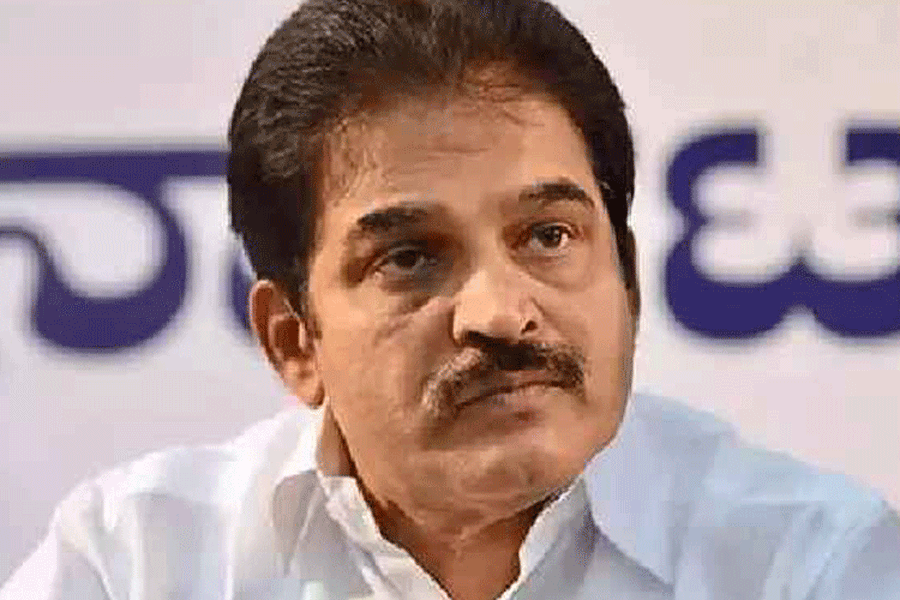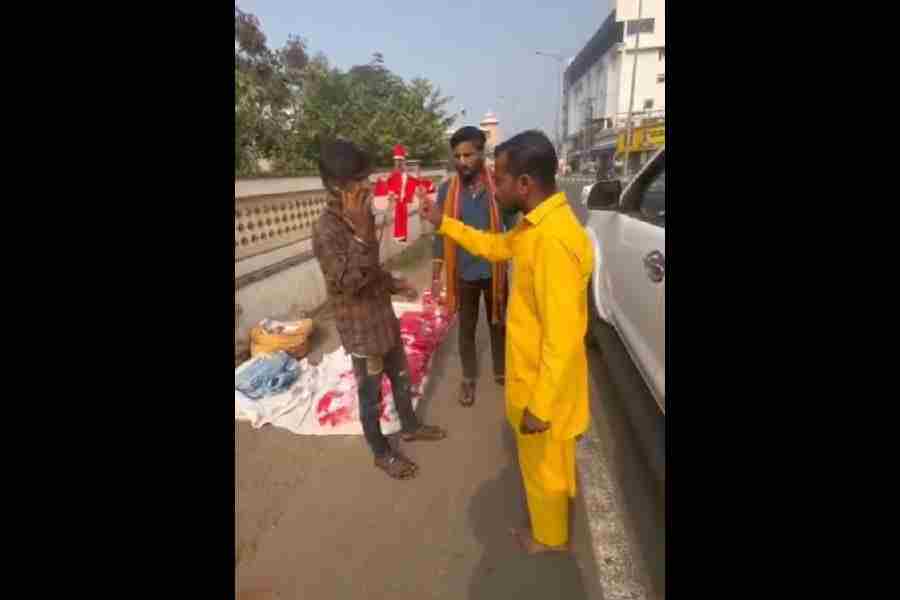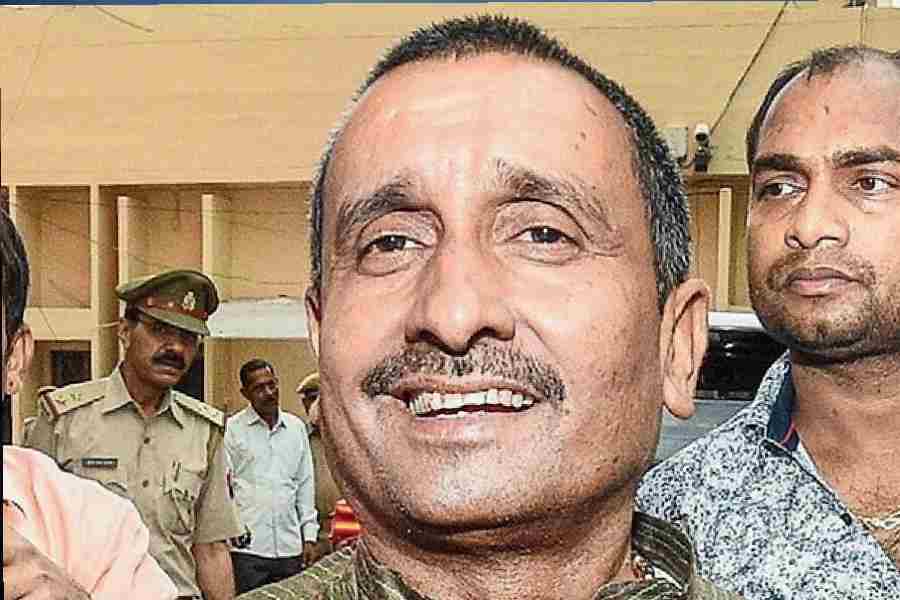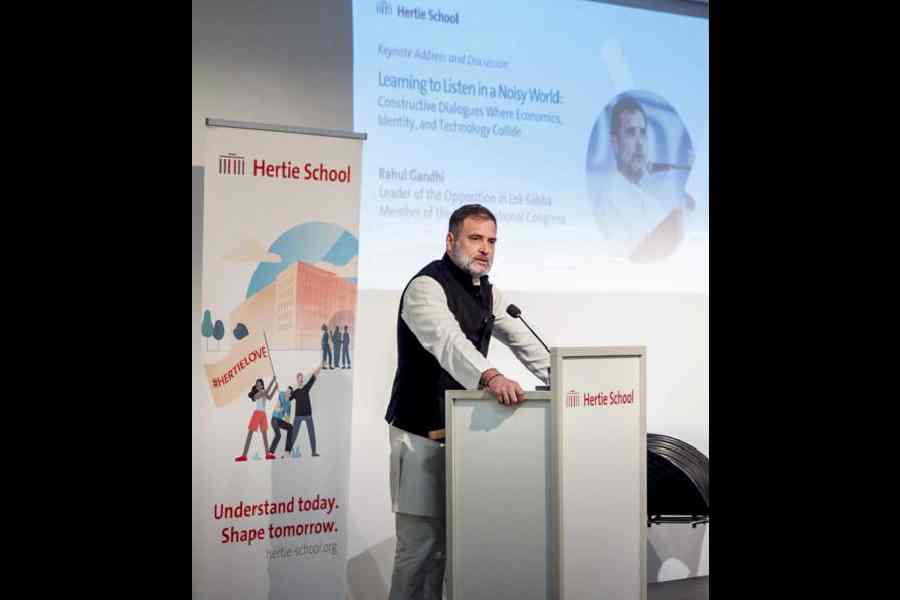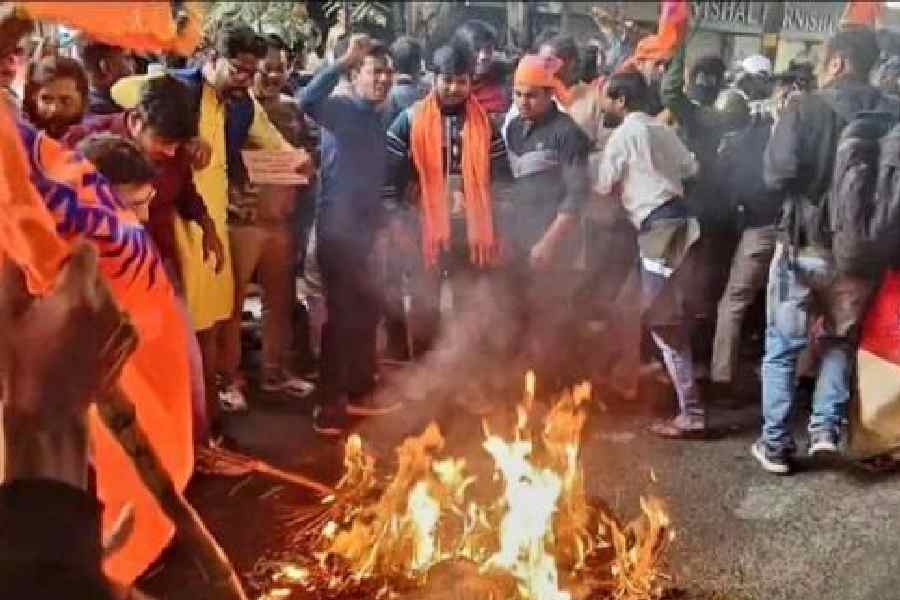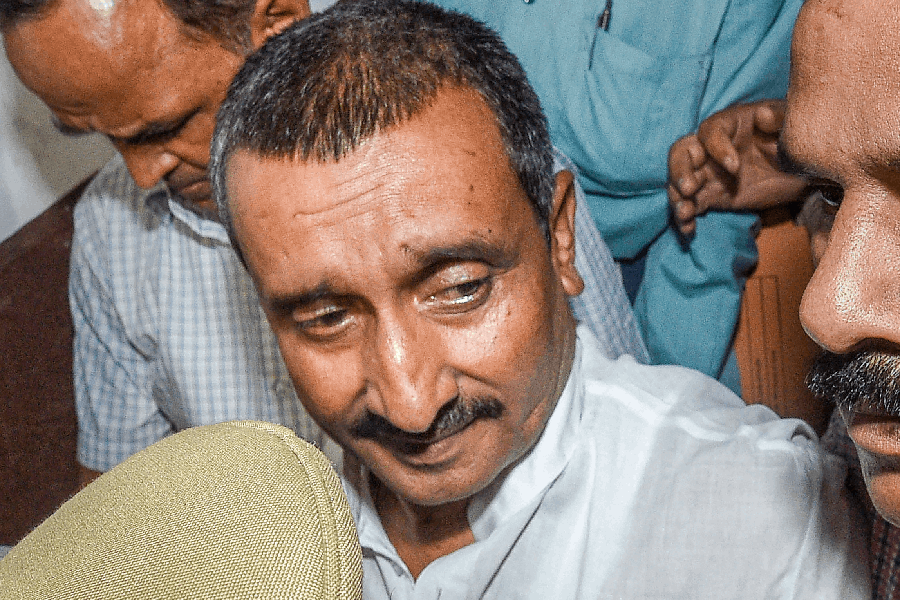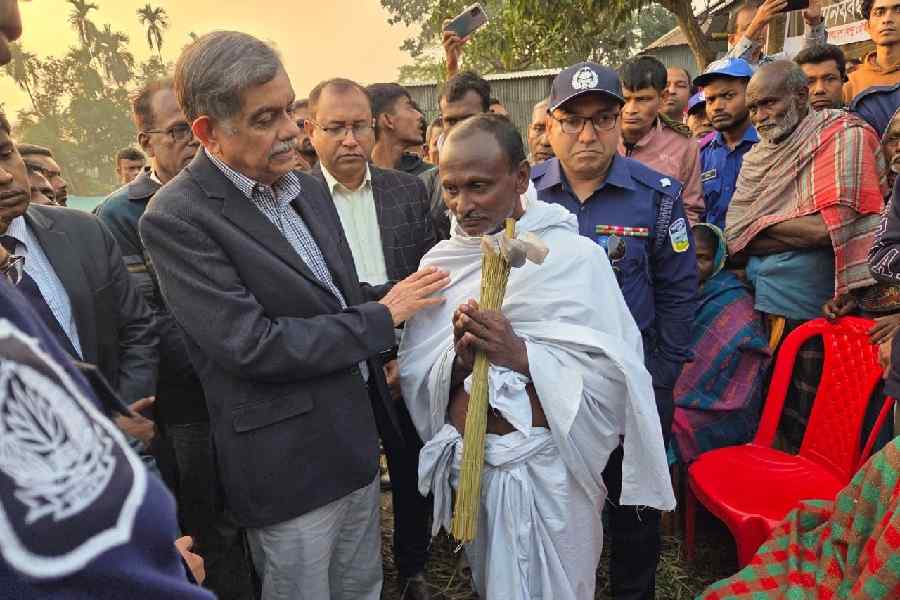 |
| Vajpayee in April 1993, a few months after the Babri Masjid demolition |
New Delhi, Nov. 23: As Prime Minister, Atal Bihari Vajpayee would turn to the poetry of Shiv Mangal Singh “Suman” when he was assailed by self-doubt and worry.
The poem he often quoted read: “Na haar mein, Na jeet mein, Kinchit nahin bhaybhit main, Kartavya path par jo bhi mile, Yeh bhi sahi woh bhi sahi” (I am not afraid of defeat and victory, whatever comes my way of duty, I will accept it, because this is true and that is true).
The “yeh bhi sahi, woh bhi sahi” line was an unwritten credo in Vajpayee’s political life: if “Hindutva” was an Indian “reality”, so was religious diversity and tolerance. If he ticked off Narendra Modi for not abiding by “raj dharma” (ethics of governance) after the 2002 Gujarat communal violence, he also wondered why Muslims the world over could never “co-exist peacefully” with other communities.
For the six years that he ruled, Vajpayee mostly managed to pull off his balancing act because he contained his ideological contradictions in his affable and easy-going persona.
Now with reports suggesting that the Liberhan commission has “indicted” him over the Babri Masjid demolition — those claiming to have accessed the report have given contradictory interpretations — the BJP’s biggest fear is that its best-known and celebrated “moderate” face might have worn a “mukhota” (mask) all along.
Former BJP ideologue K.N. Govindacharya committed the mistake of calling Vajpayee a “mukhota” in 1995 when he was being packaged as a prime ministerial prospective and was sent to the boondocks.
If Vajpayee’s name figures in the report, it could be because of a speech he made in Lucknow on December 5, 1992, on the eve of the Babri demolition.
Although he consistently kept away from the Ram temple “movement”, by 1992 his political instincts instructed him to join the bandwagon or risk being banished into oblivion. Therefore, he hitched on to the streams of “janadesh” (people’s mandate) yatras that criss-crossed Uttar Pradesh for a month or so before the demolition and culminated in Ayodhya.
Vajpayee put his own spin on the Supreme Court’s order of November 1992 prohibiting construction on the 2.77 acres of “disputed” land. He was quoted as saying that the court had not proscribed “kar seva” but only “told us not to start construction till the final court order is delivered”.
Vajpayee then alluded to the apex court’s permission to do “bhajans” and “kirtans” on the site and justified the presence of the over 2 lakh people that had converged on Ayodhya. He hinted they could not be expected to be immobile or disciplined and could have a shot at constructing something. “Bhajan is not done by a single individual. It is done collectively. And for kirtans, even more people are required. And bhajans and kirtans cannot be done standing. How long can one keep standing? There are sharp-edged boulders there and no one can sit on those. So the ground has to be levelled, made fit enough to sit.”
A video clip of his Lucknow meeting showed he was greeted with shouts of “Jai Shri Ram”. “We will also be doing yagya, so there will be some construction also, at least a vedi (an altar for performing rituals) will be constructed and I don’t think that the Supreme Court has prohibited any of these.”
Vajpayee reportedly warned: “I do not know what will happen there tomorrow. Everything will be decided by the kar sevaks.
He concluded by saying that although he was “keen” to go to Ayodhya he was “asked” to return to Delhi.
Unlike the exhortations of Advani and Uma Bharti, nobody in the BJP would label Vajpayee’s address as “ overtly provocative”.
A video clip was submitted to the Liberhan commission by a Lucknow-based lawyer, I.B. Singh, on February 4, 2004. Singh asked the judge to summon Vajpayee for interrogation but the plea was turned down.
Vajpayee’s departure to Delhi was of a piece with his responses throughout the Ayodhya era. The RSS’s original blueprint had a role for Vajpayee: he was asked to lead one of the four “rath yatras” they planned with Advani, Vijaya Raje Scindia and Sikandar Bakht, then the BJP’s best-known Muslim face. Vijaya Raje and Bakht refused for health reasons while Vajpayee sidled away abroad on a parliamentary assignment.
Advani was the only charioteer. As he steered his chariot and the BJP from victory to victory, Vajpayee in good humour asked journalists who called on him: “But why me? I have been marginalised.”
He didn’t have to wait for long for his comeback. Days after the demolition, a commercial plane flying from Delhi to Lucknow was hijacked as it circled over Amausi airport. It landed but the hijacker, a VHP activist, refused to release the passengers. Vajpayee came and appealed to him over a loudspeaker. He relented.
When Vajpayee, then Opposition leader in the Lok Sabha, was asked by this correspondent if incidents like the hijack would do irreparable damage to the BJP and his image, he snapped back: “Secularists like you don’t have to spend sleepless nights over this. I will carry the secular baggage on my broad shoulders.”
It wasn’t an easy job when he was the Prime Minister with the RSS and the VHP breathing down his neck.
Despite their frequent run-ins, K.S. Sudarshan, the then RSS chief, used to quote lines from Vajpayee’s poems in his speeches and even ensured his “swayamsevaks” sung lines from one of them in their shakhas: “Hindu tan man, Hindu Jeevan, Rag rag Hindu mera parichay” (Hindu body and soul, Hindu life, in every pore my identity is of a Hindu). Nobody could tell though what Vajpayee would consider his ultimate tribute: Sudarshan’s endorsement or the respect he earned from Maulana Syed Abul Hasan Ali Nadwi, the late chairman of the Muslim Personal Law Board and Oxford University’s Islamic Centre.


